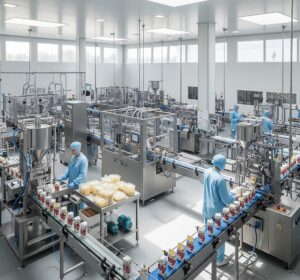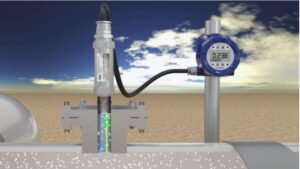Food Analyzers
Food Industry Analyzers
In the dynamic and highly regulated food industry, maintaining product quality, ensuring safety, and maximizing shelf life are paramount. Process analyzers play a vital role in achieving these objectives by providing real-time, accurate measurements of critical parameters throughout the production and packaging stages. Among these parameters, oxygen (O2) analysis stands out as exceptionally crucial. Oxygen, while essential for life, can be a destructive force in food products. Its presence, even in trace amounts, can trigger a cascade of undesirable reactions that compromise product integrity, leading to significant economic losses and potential health risks. This is why precise O2 analysis is not just a benefit, but an absolute necessity for any food manufacturer committed to excellence.Why is O2 Analysis So Critical in the Food Industry?
- Product Spoilage and Shelf Life: Oxygen is a primary driver of food spoilage. It promotes: Oxidation: Fats and oils can oxidize, leading to rancidity and off-flavors. Enzymatic Browning: Many fruits and vegetables brown and deteriorate in the presence of oxygen. Microbial Growth: While some spoilage bacteria are anaerobic, many common spoilage microorganisms thrive in aerobic (oxygen-rich) environments, leading to rapid deterioration, mold growth, and unpleasant odors. By controlling oxygen levels, manufacturers can significantly extend the shelf life of their products, reducing waste and increasing profitability.
- Flavor, Color, and Aroma Degradation: Even before overt spoilage, oxygen can negatively impact the sensory attributes of food. It can cause: Loss of vibrant colors in fresh produce, meats, and beverages. Development of undesirable off-flavors and aromas, particularly in delicate products like coffee, spices, and baked goods. Degradation of essential nutrients, such as vitamins, which are often sensitive to oxidation.
- Food Safety: While some pathogens are anaerobic, others are aerobic. Inadequate oxygen control can create environments conducive to the growth of harmful bacteria, potentially leading to foodborne illnesses and costly product recalls. For instance, in vacuum-packed or Modified Atmosphere Packaging (MAP), ensuring ultra-low oxygen levels is critical to prevent the growth of specific pathogens that thrive in oxygen-depleted environments.
- Packaging Integrity and Efficiency: O2 analyzers are essential for verifying the effectiveness of packaging processes, especially in: Modified Atmosphere Packaging (MAP): This technique involves actively altering the gas composition inside a package (e.g., reducing O2 and increasing N2 or CO2) to inhibit spoilage. Continuous O2 monitoring ensures the correct gas mixture is maintained, detecting leaks or sealing issues that could compromise the protective atmosphere. Vacuum Packaging: Ensuring that oxygen has been effectively removed from vacuum-sealed packages is vital for preserving freshness and preventing spoidation. Headspace Analysis: Measuring the oxygen concentration in the “headspace” (the air gap) above the product in sealed containers helps evaluate packaging effectiveness and predict shelf life.
- Process Optimization and Cost Reduction:
Nitrogen Blanketing/Inerting: Many food processing steps, such as mixing, storing, and bottling, utilize inert gases like nitrogen to displace oxygen and protect the product. O2 analyzers ensure that the blanketing process is effective, preventing excessive nitrogen usage and optimizing costs.
Fermentation Processes: In brewing, winemaking, and other fermented products, precise dissolved oxygen control is critical for yeast activity, flavor development, and preventing off-flavors.
Traceability and Compliance: Accurate O2 data provides critical information for quality assurance, regulatory compliance, and internal auditing, offering a robust system for traceability.

For further details and specifications
Choose the PDF files to download
MOD-1040 MAP
Download PDF
Please choose at least one file


